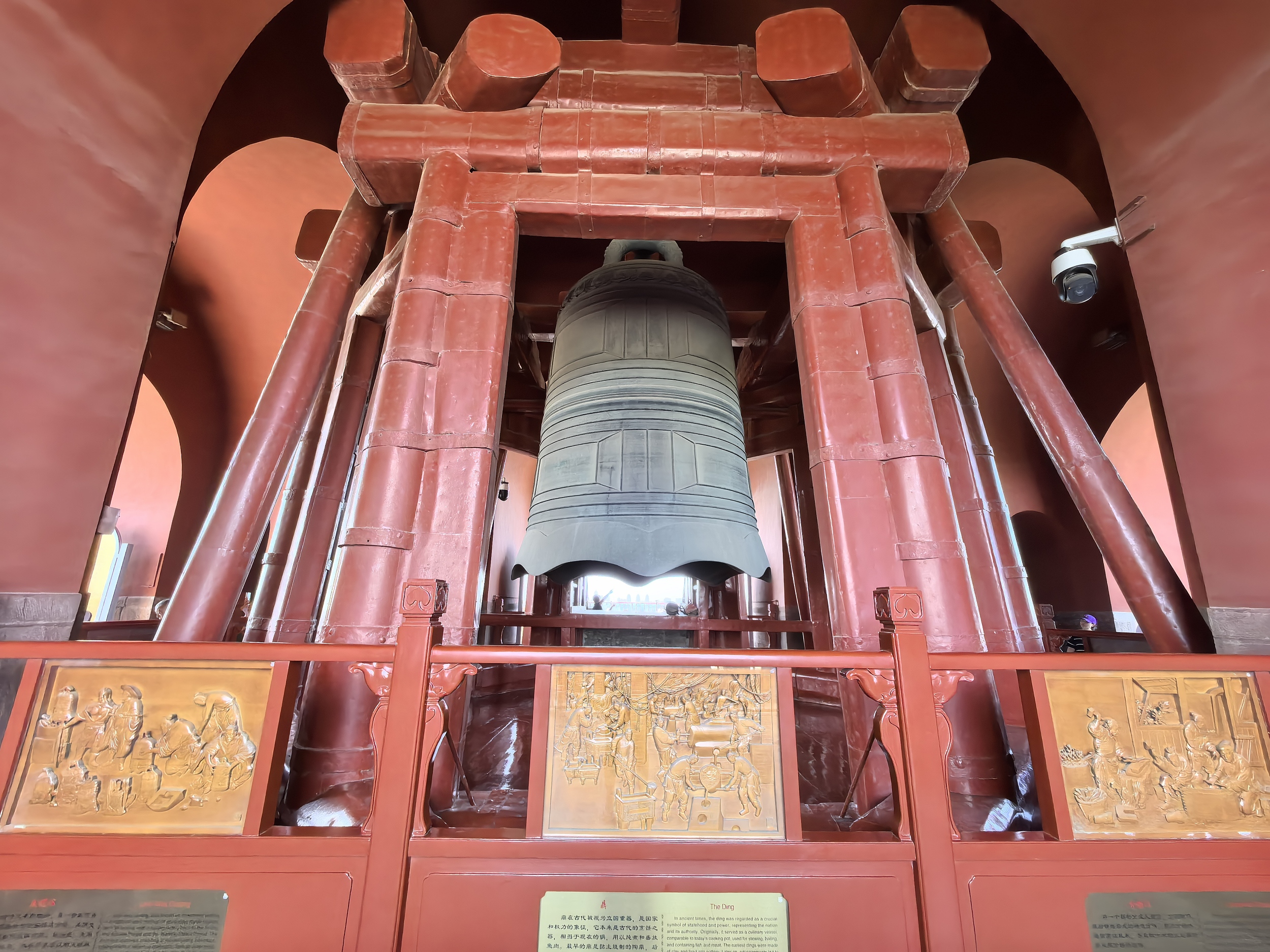Bell and Drum Towers: Echoing the Sound of History

The Bell and Drum Towers, located at the northern tip of the Beijing Central Axis, which is on the UNESCO World Heritage List, play a significant role in the city planning of ancient Beijing.
The Bell and Drum Towers served as a timekeeper during the Yuan, Ming, and Qing dynasties. From 7 pm to 9 pm every night, the drums were beaten before the bell was rung. From 3 am to 5 am in the morning, the bell was rung before the drums were beaten. When the bell sounded at night, the city gates were closed to traffic. The morning bell rang to open the city gates.
The Drum Tower houses 25 drums, with one designated as the main drum and the remaining 24 corresponding to the 24 solar terms. Hanging from the Bell Tower is a massive timekeeping bell cast during the Yongle reign of the Ming Dynasty. The bell boasts a total height of 7.02 meters, a diameter of 3.4 meters, and weighs approximately 63 tons. It is China's heaviest and biggest surviving ancient bronze bell, and its sound is long and loud and travels dozens of kilometers.
How did ancient Chinese manage to cast such a colossal bronze bell? According to the book Tiangong Kaiwu: Chinese Technology in the Seventeenth Century, the casting of large bells involved digging deep pits, constructing molds with lime and earth, and utilizing pit-shaping and multi-furnace casting techniques.
Given the weight of these bells and the absence of modern lifting equipment, workers would build slopes made of soil on both sides of the tower, reaching the same height as the tower itself. They would then manually pull the bell up the slope, and remove the mound after installing the bell. In winter, this technique would be assisted by watering the soil to form ice, which reduced friction and made it easier to drag the bells.







